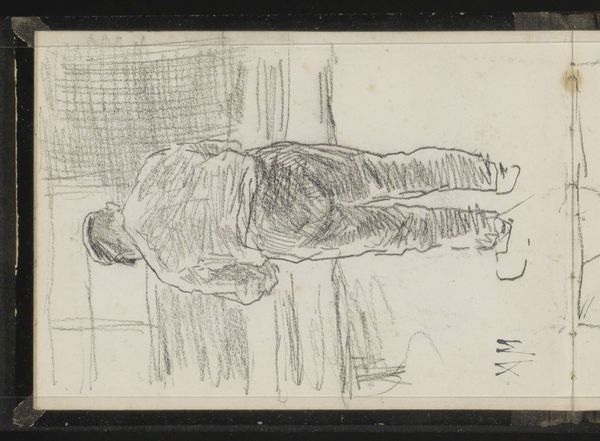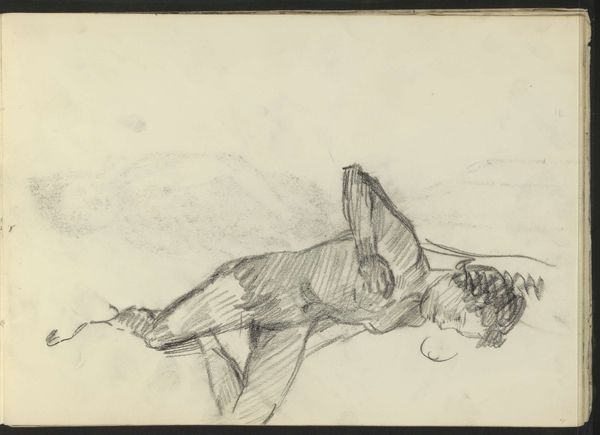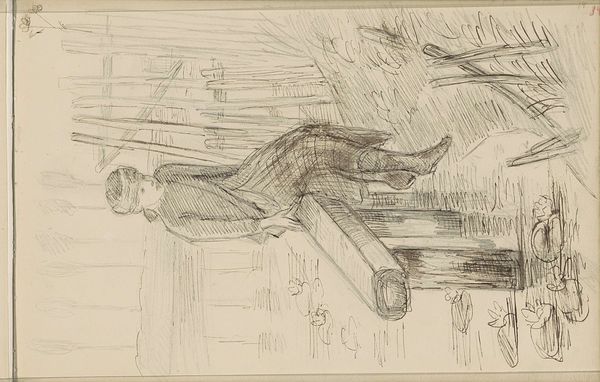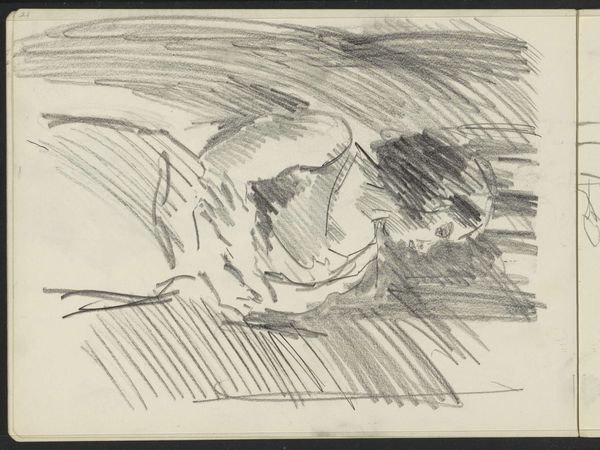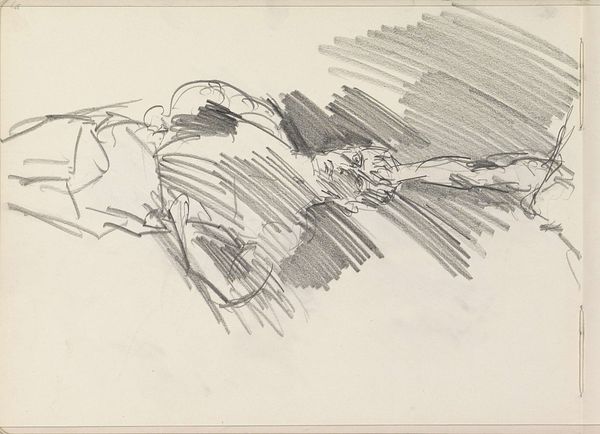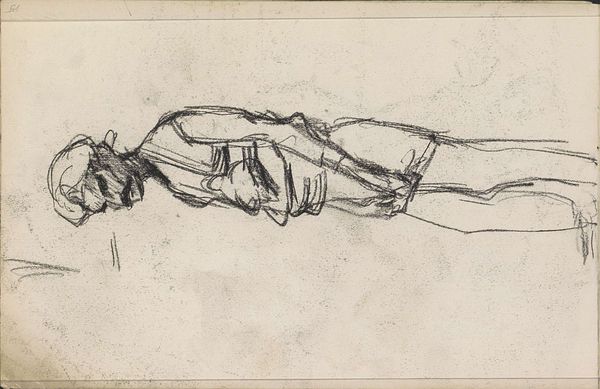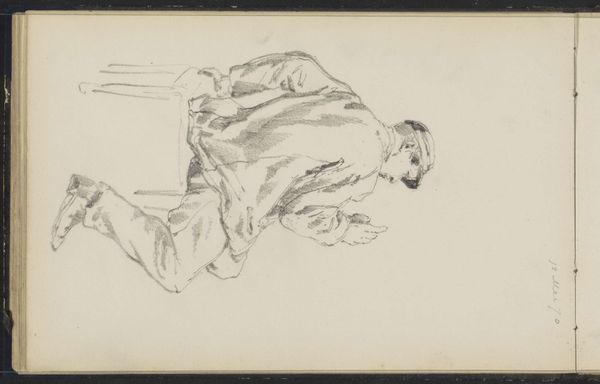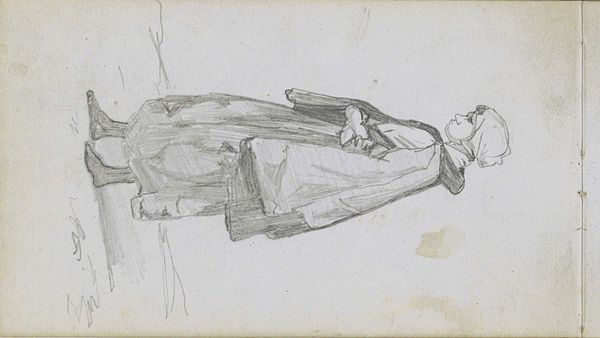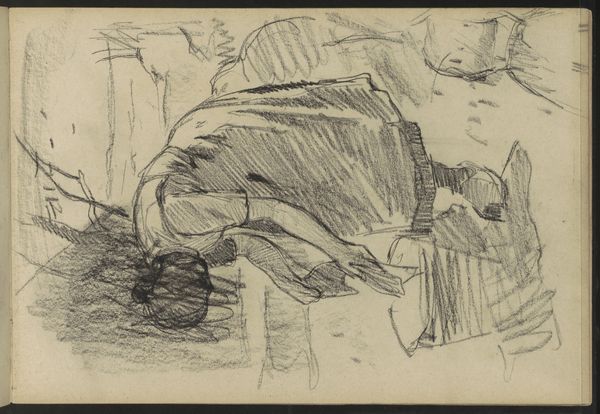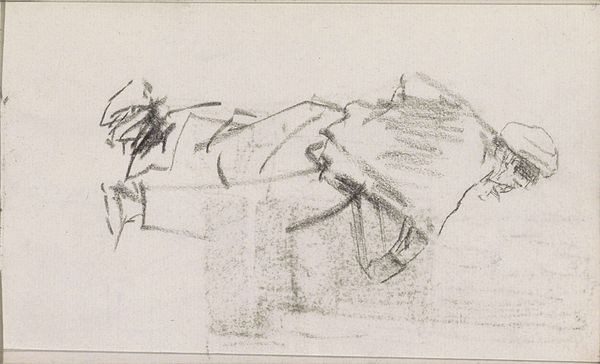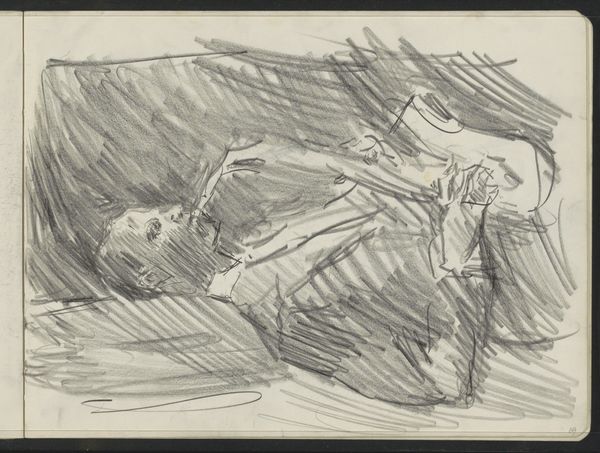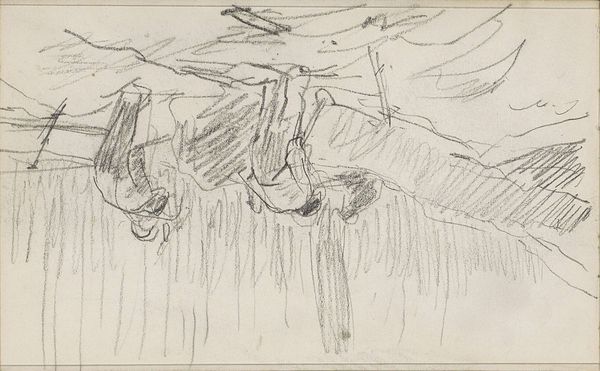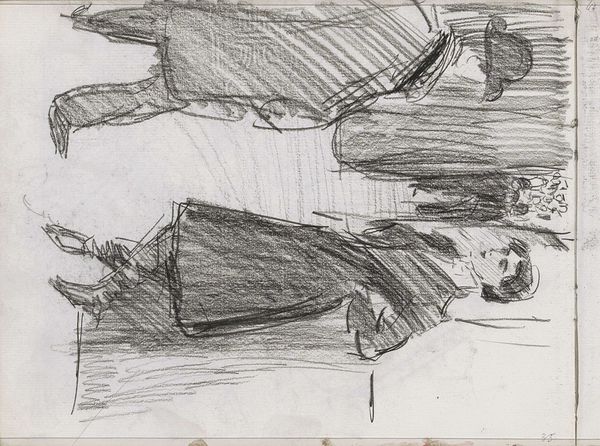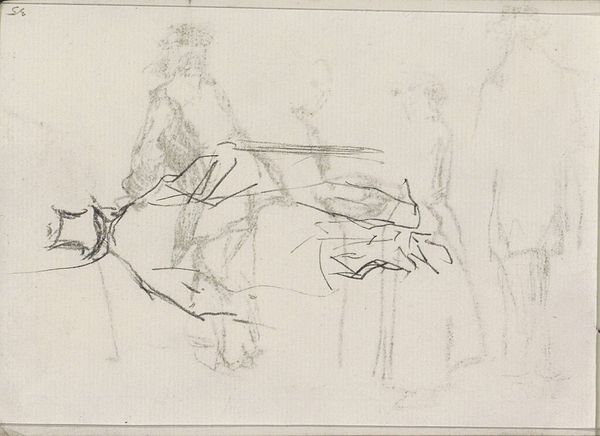
drawing, pencil
#
portrait
#
drawing
#
impressionism
#
pencil sketch
#
landscape
#
pencil
#
realism
Copyright: Rijks Museum: Open Domain
Editor: This pencil drawing, “Landarbeider” by Anton Mauve, created around 1881-1888, is surprisingly affecting. It feels very immediate and raw. What stories do you see woven into these sketched lines? Curator: Immediately, I'm drawn to the figure’s stooped posture, rendered with such economy of line. Consider how that single line describing the back isn’t just a contour but speaks volumes. The landscape, seemingly simple, provides a powerful backdrop. Do you feel the weight of tradition embedded here, a cultural memory of rural life? Editor: I do. It feels like a moment captured from everyday life. Is there any symbolism beyond that, though? Curator: Mauve, though associated with the Hague School, certainly engages with Realist concerns. But his subjects were never simply portraits. Think of the Dutch Golden Age and its influence: landscapes weren’t just scenery, but moral statements. Might Mauve be quietly referencing that tradition, imbuing this worker with a certain dignity, or perhaps highlighting the burden carried by the working class? Observe the way the light catches the hat... almost a halo effect. Is it deliberate? Editor: So, you're suggesting there could be a deliberate intention to ennoble this worker? Curator: Potentially. Symbols are rarely fixed; their meanings shift. But artists engage in visual conversations. What visual echoes do *you* hear when you look at this piece? How does it speak to contemporary ideas of labor and landscape? Editor: That's given me a new perspective. It's not just a sketch; it’s part of a longer visual conversation. Curator: Precisely. And that conversation is one we're invited to join. I'll look at rural landscapes differently now!
Comments
No comments
Be the first to comment and join the conversation on the ultimate creative platform.
